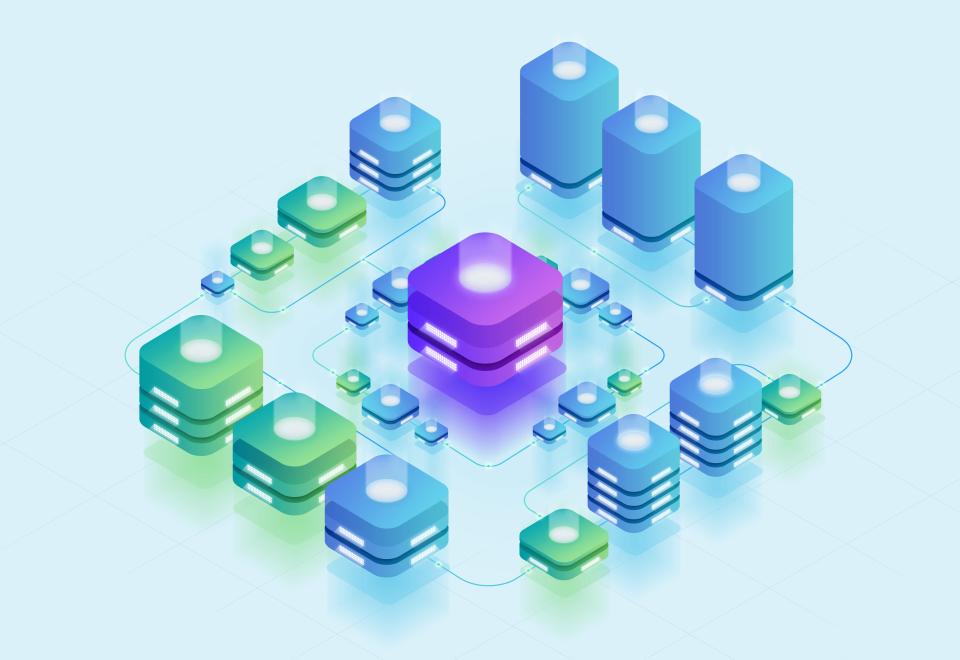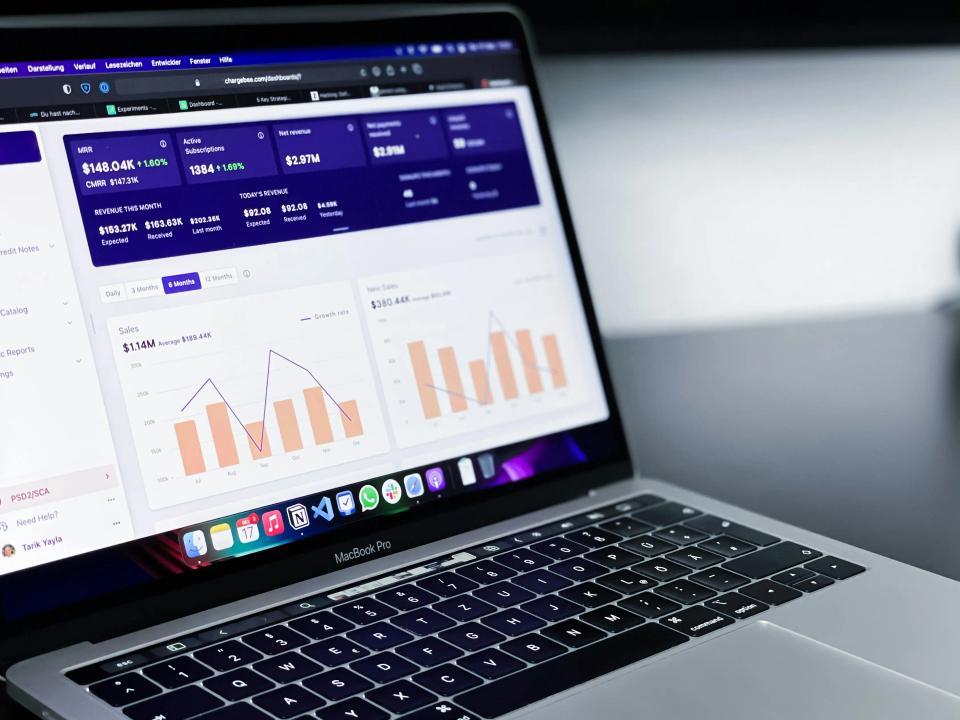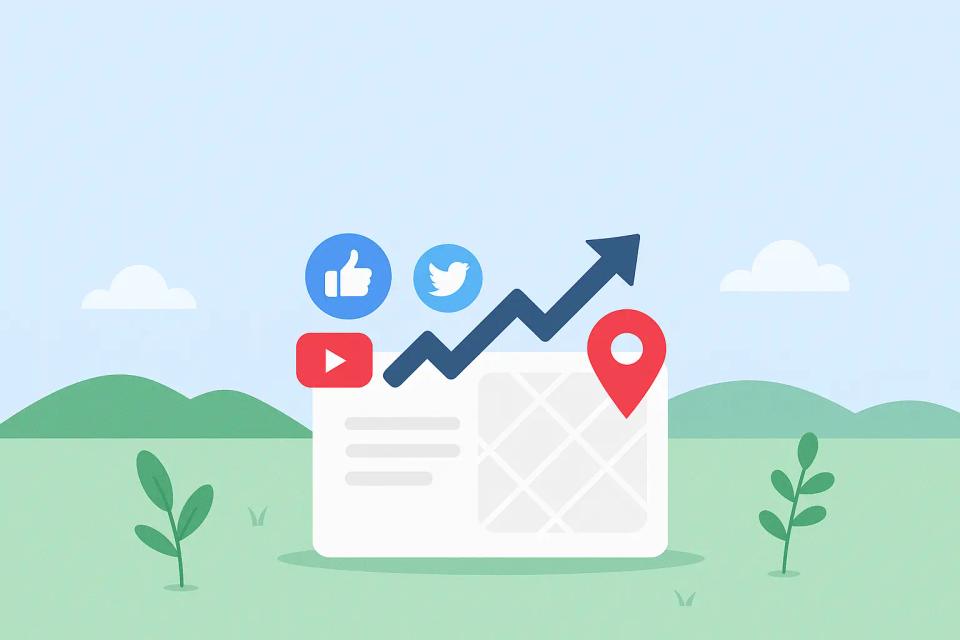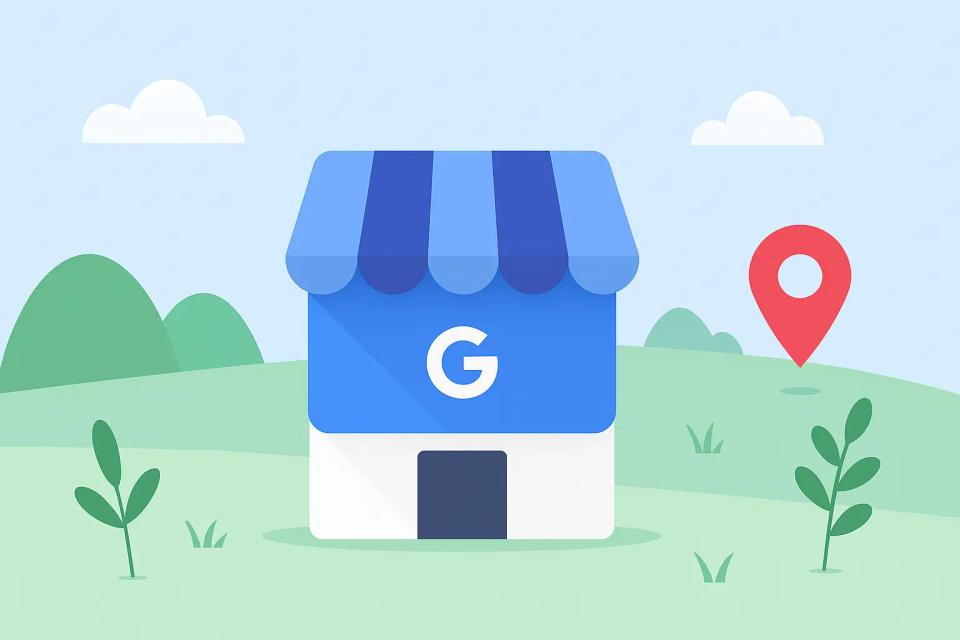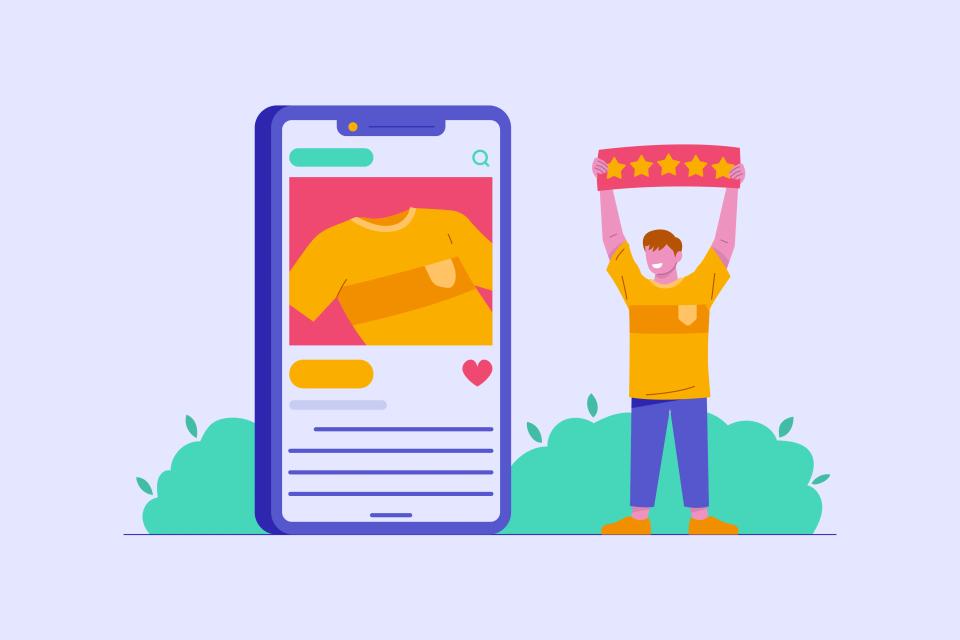Is your local business playing hide-and-seek with potential customers online? You pour your heart into your services, your products, your team. But if local customers can't find you when they search, you're leaving money on the table – serious money. Consider this: a staggering 78% of location-based mobile searches result in offline purchases, often within the same day.
The truth is, local Search Engine Optimization (SEO) isn't just a fancy marketing term anymore; it's the lifeblood of regional businesses. It's about ensuring that when someone in your neighborhood searches for what you offer, your name is the one they see, trust, and choose. This isn't just about visibility; it's about survival and dominance in your local market.
This guide will arm you with powerful, actionable strategies to climb those local search rankings and forge genuine connections within your community. You'll discover how to transform your online presence from a whisper to a roar. At CaptivateClick, we've seen firsthand how a well-executed local SEO strategy can ignite growth, and we're here to show you how. For small businesses looking to get started, understanding these foundational local SEO strategies is key.
The Foundation: Mastering Your Google Business Profile (GBP)
Think of your Google Business Profile (GBP) as your digital storefront, your welcome mat on the world's largest search engine. It's often the very first impression a potential local customer has of your business. Getting this right isn't just important; it's fundamental to your local success.
Why GBP is Your Local SEO Cornerstone
Your Google Business Profile is prime real estate in the digital world. It’s what powers your appearance in the coveted Google Local Pack, those top three listings that appear with a map when someone searches locally. According to Moz, businesses featured in this Local 3-Pack receive an impressive 44% of clicks, making it a critical asset for attracting ready-to-buy customers.
Beyond just visibility, your GBP listing directly shapes how customers perceive your business before they even visit your website or store. A complete, accurate, and engaging profile screams professionalism and trustworthiness. It’s your chance to control the narrative and make a stellar first impression.
This profile is more than just a listing; it's an interactive hub. Customers can get directions, call you, visit your website, read reviews, and ask questions, all directly from your GBP. Neglecting it is like leaving your physical shop unattended with the doors wide open.
Optimizing Every Facet of Your GBP Listing
First things first: you absolutely must claim and verify your Google Business Profile. This is non-negotiable. It’s the key that unlocks your ability to manage and optimize your presence. For a deeper dive into this crucial first step, explore our guide on mastering your Google Business Profile.
Your Name, Address, and Phone number (NAP) must be meticulously accurate and perfectly consistent, not just on GBP, but across the entire web. This consistency is a massive trust signal for Google. Think of it like this:
Your Business Name 123 Main Street, Anytown, ST 12345 (555) 123-4567
This exact format should be replicated everywhere. Choose the right primary and secondary categories that precisely describe your business; this helps Google understand what you do and match you with relevant searches. Detail your offerings with keyword-rich descriptions in the services/products section, and don't forget to highlight important attributes like "wheelchair accessible" or "free Wi-Fi," as BrightLocal notes these can filter searches to attract specific audiences.
Craft a compelling, keyword-rich business description that tells your story and highlights your unique selling propositions. And remember, visuals are king! Regularly upload high-quality photos and videos of your business, team, and products. BrightLocal's research shows that photos and videos on GBP can increase engagement by a stunning 42%. Neil Patel also highlights that keywords in GBP descriptions can improve relevance for "near me" searches by 30%.
Engaging Through GBP Features (Beyond Setup)
Your GBP isn't a "set it and forget it" tool; it's a dynamic platform for ongoing customer engagement. Use Google Posts to share updates, special offers, upcoming events, or new product launches. This keeps your profile fresh and can improve click-through rates by 15–20%, according to BrightLocal.
Proactively manage the Q&A section. Add your own frequently asked questions and provide clear, concise answers. When users ask questions, respond promptly and helpfully; this reduces customer friction by addressing FAQs directly in search results.
Enable the messaging feature to allow customers to contact you directly from your profile. Quick responses here can significantly enhance customer satisfaction, as Neil Patel suggests this improves customer retention. We'll dive deeper into reviews shortly, but know that managing them directly through GBP is also crucial.
CaptivateClick Tip:
We often find businesses overlook the "Products" and "Services" tabs within GBP. Fully utilizing these sections, as MarketingDr points out, allows businesses to showcase offerings with pricing, which can significantly reduce bounce rates and pre-qualify leads.
Building Trust & Authority: Local Citations & NAP Consistency
Imagine you're looking for a reliable local plumber. You find one online, but their phone number is different on three different websites. Confusing, right? That's the kind of friction inconsistent information creates, not just for customers, but for search engines too.
What are Local Citations and Why They Matter?
Local citations are simply mentions of your business's Name, Address, and Phone number (NAP) on other websites. These can be found on online directories like Yelp or Yellow Pages, social media platforms, industry-specific websites, and local community pages. Think of each consistent citation as a vote of confidence for your business.
Search engines like Google use these citations to verify your business's existence, legitimacy, and location. The more consistent and authoritative citations you have, the more trust Google places in your business information. According to Uberall, local citations account for a significant 13% of Google’s local ranking factors, making them a non-negotiable part of your strategy.
These mentions aren't just about pleasing algorithms; they also put your business in front of more local eyes. Customers often use these directories and local sites to find services, so being accurately listed expands your reach. It’s about being present wherever your local customers are looking.
The Golden Rule: NAP Consistency is King
If there's one mantra to chant for local SEO, it's "NAP consistency." Your Name, Address, and Phone number must be identical across every single online platform. Even minor variations – "Street" vs. "St." or a missing suite number – can create confusion for search engines and erode trust.
The danger of inconsistent NAP information is very real. Uberall highlights that inconsistent NAP details can reduce visibility by up to a staggering 40%. This means fewer customers finding you, and more business going to your competitors who have their act together.
Establish a canonical (official) version of your NAP and use it religiously. This should be the exact information listed on your Google Business Profile. Document this canonical NAP and ensure everyone in your team who might update online listings uses it without deviation.
Key Citation Sources to Target
Not all citation sources are created equal. Start with the major data aggregators like Foursquare, as these platforms feed information to many other smaller directories. Then, ensure you're accurately listed on core directories such as Yelp, Yellow Pages, and other well-known general business listing sites.
Don't stop there. Seek out industry-specific directories relevant to your niche. For example, a contractor might want to be on Houzz, or a restaurant on TripAdvisor. Whitespark notes that citations on industry-specific sites like Houzz can drive 35% more qualified leads.
Finally, tap into your local community. Get listed on your local Chamber of Commerce website, community portals, and neighborhood association sites. Whitespark's data suggests that citations on the Chamber of Commerce website can increase local trust signals by 22%. These hyper-local citations strongly signal your connection to the area.
Citation Audit & Cleanup
Think your NAP is consistent? You might be surprised. Old addresses, incorrect phone numbers, or slight name variations can lurk on forgotten listings across the web. That's why a citation audit and cleanup is essential.
Use tools like those offered by Whitespark or BrightLocal to find existing citations and identify inconsistencies or inaccuracies. This isn't a one-time task; it's an ongoing process. Businesses move, phone numbers change, and new directories pop up, so regular audits are key to maintaining that crucial NAP consistency.
Correcting these errors can be time-consuming but is incredibly valuable. ReputationStacker points out that citation cleanup campaigns can recover 15–20% of lost traffic from incorrect listings. This reclaimed traffic can mean more calls, more website visits, and ultimately, more customers.
On-Page SEO for Local Triumph
Your website is your digital home base. While GBP and citations build your off-site authority, what happens on your website is equally critical for local SEO success. You need to speak Google's language, and your customers' language, right on your own turf.
Localizing Your Website Content
Start with keyword research, but with a local twist. Think about how your local customers search. They're likely using phrases like "plumber in [Your City]" or "[Your Neighborhood] best pizza." Incorporate these geographically specific keywords naturally into your website content.
Optimize your title tags and meta descriptions for every important page. These are the snippets that appear in search results. Including your city or region naturally here can significantly improve click-through rates by as much as 18%, as RicketyRoo suggests. Use header tags (H1-H6) to structure your content logically and include local keywords where relevant – for instance, an H1 tag like "[City] Expert Electrical Services."
Weave your location naturally into your body content. Talk about the neighborhoods you serve on your service pages. Share your local story on your "About Us" page. The goal is to make it clear to both users and search engines that you are an active, relevant business in their specific area.
Creating Location-Specific Pages
If your business has multiple physical locations or serves distinct geographic areas, creating dedicated location-specific pages is a game-changer. Don't just duplicate content and swap out the city name – that's a recipe for poor rankings. Each location page needs unique, valuable content.
These pages should feature the specific address and phone number for that location, an embedded Google Map, and ideally, testimonials from customers in that particular area. According to RicketyRoo, well-optimized location pages with embedded maps and testimonials can increase organic traffic by 35%. This targeted approach helps you rank for "[service] in [specific town/neighborhood]" searches. For businesses managing multiple storefronts, exploring local SEO strategies for multi-location businesses can provide even more tailored insights.
Think about what makes each location or service area unique. Are there local landmarks nearby? Specific services offered only at that branch? Highlight these details to create genuinely useful and distinct pages that resonate with local searchers and satisfy search engine requirements for unique content.
Schema Markup for Local Businesses
Want to give search engines a crystal-clear understanding of your local business information? That's where Schema markup comes in. Specifically, LocalBusiness schema is a type of structured data you can add to your website's code to explicitly tell search engines details like your business type, address, phone number, opening hours, and more.
The benefits are twofold. Firstly, it helps search engines categorize and understand your business more accurately, which can improve your relevance for local searches. Secondly, it can make your listings eligible for "rich snippets" in search results – those eye-catching extra bits of information like star ratings or event details. Content Whale reports that LocalBusiness schema markup can boost rich snippet appearances by an impressive 40%, making your listing more attractive and clickable.
While it might sound technical, implementing basic LocalBusiness schema is often straightforward, and the payoff in terms of enhanced visibility and click-through rates can be substantial. It’s like giving Google a perfectly organized file about your business.
CaptivateClick Insight:
A common mistake we see is "keyword stuffing" – cramming local keywords unnaturally into website content. We focus on creating genuinely useful, high-quality local content that naturally incorporates relevant terms, providing value to the reader while signaling local relevance to search engines.
Content That Connects: Engaging Your Local Community
Your content is your voice. In local SEO, it's your opportunity to shout from the digital rooftops that you're not just in the community, but part of it. Generic, bland content won't cut it; you need to create content that resonates deeply with your local audience.
Beyond Generic Blog Posts: Think Local Relevance
Move beyond generic "5 tips for X" articles. Instead, brainstorm content ideas that have a distinct local flavor. Are there upcoming local events, festivals, or news stories you can tie into your business or industry? Highlighting these shows you're engaged and current.
Showcase customer success stories or spotlights featuring clients from your local area. This builds social proof and makes your services feel more tangible and relatable to neighbors. For instance, a pet store could create a guide to the "Best Dog-Friendly Parks in [Your City]," or a B2B service could interview local community leaders or successful business partners. NiceJob's data indicates that localized blog posts, such as 'Top 10 Parks in Dallas,' can attract 45% more organic traffic than generic content.
The key is to provide genuine value to your local audience. Think about their specific needs, interests, and pain points within the context of your shared geographic area. This approach not only attracts local search traffic but also fosters a sense of community and loyalty. For more ideas, explore our dedicated guide on creating locally relevant content that ranks.
Leveraging Local Language and Nuances
Does your region have unique slang, colloquialisms, or specific ways of referring to things? If it's appropriate for your brand voice, subtly incorporating these local linguistic nuances can make your content feel more authentic and familiar. This shows you truly understand the local culture.
This doesn't mean forcing slang where it doesn't fit, but rather being mindful of the local vernacular. For example, how locals refer to specific neighborhoods, landmarks, or even common problems can be woven into your content. This level of detail can make your business feel more like a friendly neighbor than a faceless corporation.
Understanding these subtle preferences can also extend to the types of content that resonate most. Are local residents particularly active on certain social media platforms? Do they prefer video content or in-depth guides? Tailoring your content format and style to local preferences can significantly boost engagement.
Promoting Local Content
Creating fantastic local content is only half the battle; you also need to ensure your community sees it. Share your local-focused blog posts, guides, and news on local Facebook groups, Nextdoor, or other community forums (always respecting group rules, of course). This direct outreach can drive immediate local traffic and engagement.
Consider partnering with local influencers, complementary businesses, or community organizations to cross-promote content. A collaboration can expose your business to a new, relevant local audience. NiceJob suggests that partnering with local influencers can increase content shares by 25% and backlinks by 15%, amplifying your reach and authority.
Don't forget to leverage your existing channels. Email your local content to your subscriber list, especially segments based in your service area. The more you can demonstrate your local expertise and community involvement through your content, the stronger your local SEO and brand reputation will become.
The Power of Persuasion: Online Reviews & Reputation Management
In the digital age, online reviews are the new word-of-mouth, magnified a thousand times. They are a cornerstone of trust, a powerful persuader, and a critical factor in both local SEO rankings and customer conversion. Ignoring your online reputation is like letting strangers graffiti your storefront.
Why Reviews are Crucial for Local SEO & Conversions
Online reviews serve as powerful social proof. When potential customers see positive feedback from their neighbors, it builds instant trust and credibility. In fact, AIOSEO reports that a staggering 99% of consumers read online reviews when evaluating local businesses.
Beyond influencing customer decisions, reviews directly impact your local search rankings. Google sees a steady stream of positive reviews as a signal of a quality, trustworthy business. According to Wild Creek, businesses with 100+ reviews tend to rank about 12% higher in local map packs than those with fewer reviews. More reviews, and higher quality reviews, often translate to better visibility.
Think about your own search behavior. When faced with multiple options in the Local Pack, aren't you more drawn to the business with a higher star rating and more positive comments? Your potential customers are no different. Reviews are a direct line to their decision-making process.
Strategies for Encouraging More (Ethical) Reviews
The best way to get more reviews is simple: ask for them! Don't be shy about requesting feedback from your satisfied customers. You can do this in person after a positive interaction, via a follow-up email, or even with a subtle call-to-action on your receipts or invoices.
Make it incredibly easy for customers to leave a review. Provide direct links to your review profiles on Google, Yelp, and other relevant platforms. The fewer clicks it takes, the more likely they are to follow through. Local Falcon notes that soliciting reviews via post-purchase emails can increase review volume by as much as 50%.
One crucial point: never incentivize reviews with discounts, freebies, or cash, and absolutely do not buy fake reviews. This is unethical, often against the terms of service of review platforms, and can lead to severe penalties, including damaging your reputation and search rankings. Focus on earning genuine reviews through excellent service.
Responding to All Reviews (The Good, The Bad, The Ugly)
Your engagement with reviews shouldn't stop at collecting them; responding is equally important. Aim to respond to all reviews – positive, neutral, and negative – in a timely and professional manner. Wild Creek's data shows that responding to reviews within 24 hours can improve customer satisfaction scores by 35%.
For positive reviews, a simple thank you and a personalized comment can go a long way in reinforcing customer loyalty. For negative reviews, see them as an opportunity. Acknowledge the customer's concerns, apologize if appropriate, and offer to take the conversation offline to resolve the issue. A thoughtful response can sometimes turn a dissatisfied customer into a loyal advocate and even increase retention rates by 44%.
Prospective customers read your responses too. How you handle criticism can be just as telling as the positive feedback you receive. It demonstrates your commitment to customer service and your willingness to make things right.
CaptivateClick Approach:
We help clients develop a proactive review management strategy. This isn't just about damage control; it's about leveraging customer feedback as a direct line to understanding sentiment and as a powerful, ongoing ranking factor.
Local Link Building: Earning Regional Authority
Links are like endorsements in the online world. When another reputable website links to yours, it signals to search engines that your site is trustworthy and authoritative. For local SEO, links from other local entities are pure gold.
What Makes a Good Local Link?
Not all links are created equal. A good local link comes from a website that is relevant to your business or your geographic area and has its own authority and trustworthiness. Think of links from your local Chamber of Commerce, a well-respected local blogger, or a complementary business in your town.
These local links tell Google that your business is an established and recognized part of the local community. They carry more weight for local search rankings than a generic link from a non-local, irrelevant website. The key is genuine connection and relevance within your specific region.
Focus on quality over quantity. A few high-quality, relevant local links will do more for your local SEO than hundreds of spammy, low-quality links. It’s about building real relationships and earning endorsements from respected local sources.
Actionable Local Link Building Tactics
How do you get these coveted local links? Start by getting involved in your community. Sponsoring local events, youth sports teams, or community charities often results in a link back to your website from the event or organization's site. BrightLocal suggests that sponsoring local events can earn 12–15 authoritative backlinks per campaign.
Partner with complementary, non-competing local businesses for cross-promotion. Perhaps a local florist could partner with a nearby event venue, with each linking to the other as a preferred vendor. Joining local business associations, like your Chamber of Commerce, usually comes with a listing and a link in their directory.
Consider hosting local workshops, webinars, or events (even virtual ones) that provide value to the community. This positions you as a local expert and can attract links from attendees or local media. Offering to guest post on relevant local blogs or news sites can also be a great way to share your expertise and earn a valuable backlink.
Fresh Insight: Relationship Building is Key
The most sustainable local link building strategy isn't about aggressive outreach tactics; it's about genuine relationship building. When you actively participate in your community, support other local businesses, and provide real value, links often follow naturally. Think of it as digital networking.
Focus on creating connections, not just collecting links. These relationships can lead to more than just backlinks; they can result in referrals, collaborations, and a stronger local reputation. This community-centric approach is what truly builds lasting regional authority.
Don't Forget the Technicals: Mobile & Speed
In the race for local search dominance, the technical health of your website plays a surprisingly crucial role. Two of the biggest technical factors impacting local SEO are mobile-friendliness and page speed. If your site fails on these fronts, you're essentially putting hurdles in front of your local customers.
Mobile-First Indexing & Local Search
The vast majority of local searches happen on mobile devices. People are out and about, looking for businesses "near me" on their smartphones. RedLocalSEO highlights that mobile devices drive a massive 84% of "near me" searches. Google knows this, which is why it primarily uses the mobile version of your website for ranking (this is called mobile-first indexing).
This means your website must be responsive and mobile-friendly. It needs to look great and function flawlessly on all screen sizes, from desktops to tablets to smartphones. If your site is difficult to navigate on a mobile device, users will leave, and Google will notice. Content Whale warns that mobile-first indexing can penalize non-responsive sites, potentially reducing local rankings by as much as 50%.
Ensure your text is readable without zooming, buttons are easy to tap, and navigation is intuitive on smaller screens. A seamless mobile experience is no longer a luxury; it's a fundamental requirement for local visibility.
Page Speed
How quickly does your website load? In today's fast-paced digital world, users have little patience for slow websites. If your pages take too long to load, especially on a mobile connection, visitors will bounce – often straight to a competitor's faster site.
Page speed is a confirmed ranking factor for Google. A slow site not only frustrates users but can also directly harm your search rankings. According to Content Whale, page load times under 2 seconds can improve local search visibility by 22%. Every second counts.
There are many ways to improve page speed, including optimizing images (compressing them without losing quality), leveraging browser caching, and minifying code. Simple fixes like compressing images can reduce load times by 2–3 seconds, significantly improving user experience and SEO.
CaptivateClick Service Tie-in:
Our web development team at CaptivateClick prioritizes performance optimization from the ground up. We understand that a fast, mobile-friendly website is critical for both exceptional user experience and strong SEO performance, especially for local businesses aiming to capture on-the-go customers.
Measuring Your Local SEO Success
You've put in the work, optimized your profiles, built citations, and created amazing local content. But how do you know if it's actually working? Measuring your local SEO efforts is crucial to understanding your ROI, identifying what's effective, and pinpointing areas for improvement.
Key Metrics to Track
Start with your Google Business Profile Insights. This dashboard provides a wealth of information, including how many people viewed your profile, how many clicked through to your website, requested directions, or called your business directly from your listing. Local Falcon notes that tracking direction requests in GBP Insights often correlates with increases in actual foot traffic.
Track your rankings in the Local Pack for your most important target keywords. Are you appearing in those top three spots? How has your position changed over time? Also, monitor your website's organic traffic from your target geographic region using Google Analytics; look for increases in visitors from your specific service areas.
Ultimately, you want to see an increase in conversions – actual business results. This could be more phone calls, more contact form submissions, or, for brick-and-mortar businesses, more store visits that can be attributed to your local search efforts. Connecting these dots is key to proving the value of local SEO.
Tools for Tracking
Google provides several free and powerful tools. Google Business Profile Insights, Google Analytics (with its geo-reporting features), and Google Search Console are essential for monitoring your local performance. These tools can show you what search queries are bringing people to your site and how your content is performing in local search.
For more advanced rank tracking and competitive analysis, consider specialized local SEO tools. Local Falcon, for instance, offers a "Share of Local Voice" (SoLV) metric to help quantify your dominance in the Local Pack across a specific geographic grid. Other tools like Semrush Local or BrightLocal also offer robust features for tracking local rankings, citations, and reviews. For more on useful platforms, check out our insights on essential local SEO tools and techniques.
Regularly reviewing these metrics will help you refine your strategy. Are certain keywords performing better than others? Is one location outperforming another? Data-driven insights allow you to make smarter decisions and continuously optimize your local SEO for maximum impact.
Conclusion: Your Journey to Local Dominance
You now hold the keys to unlocking unprecedented local visibility and engagement. We've journeyed through the critical pillars: mastering your Google Business Profile, building unwavering NAP consistency through citations, supercharging your on-page SEO, crafting content that truly connects with your community, and harnessing the persuasive power of online reviews. Each strategy is a vital cog in the machine that will drive local customers to your door.
Remember, local SEO is not a "set it and forget it" task. It's an ongoing commitment to serving your local market, staying current, and consistently providing value. The digital landscape is always evolving, and so too should your efforts to remain visible and relevant to the customers right in your backyard.
Don't let your business remain a hidden gem. Start applying these strategies today and watch your local visibility grow, your engagement soar, and your bottom line flourish. The power to dominate your local market is within your grasp. Seize it!
Feeling overwhelmed or need expert guidance to fast-track your local SEO results? The team at CaptivateClick has over 15 years of experience helping businesses just like yours not just compete, but win in their local markets. We know that local mobile searches for "to buy" phrases have grown an astounding 500%, and with 78% of local mobile searches leading to an offline purchase, the stakes have never been higher.


